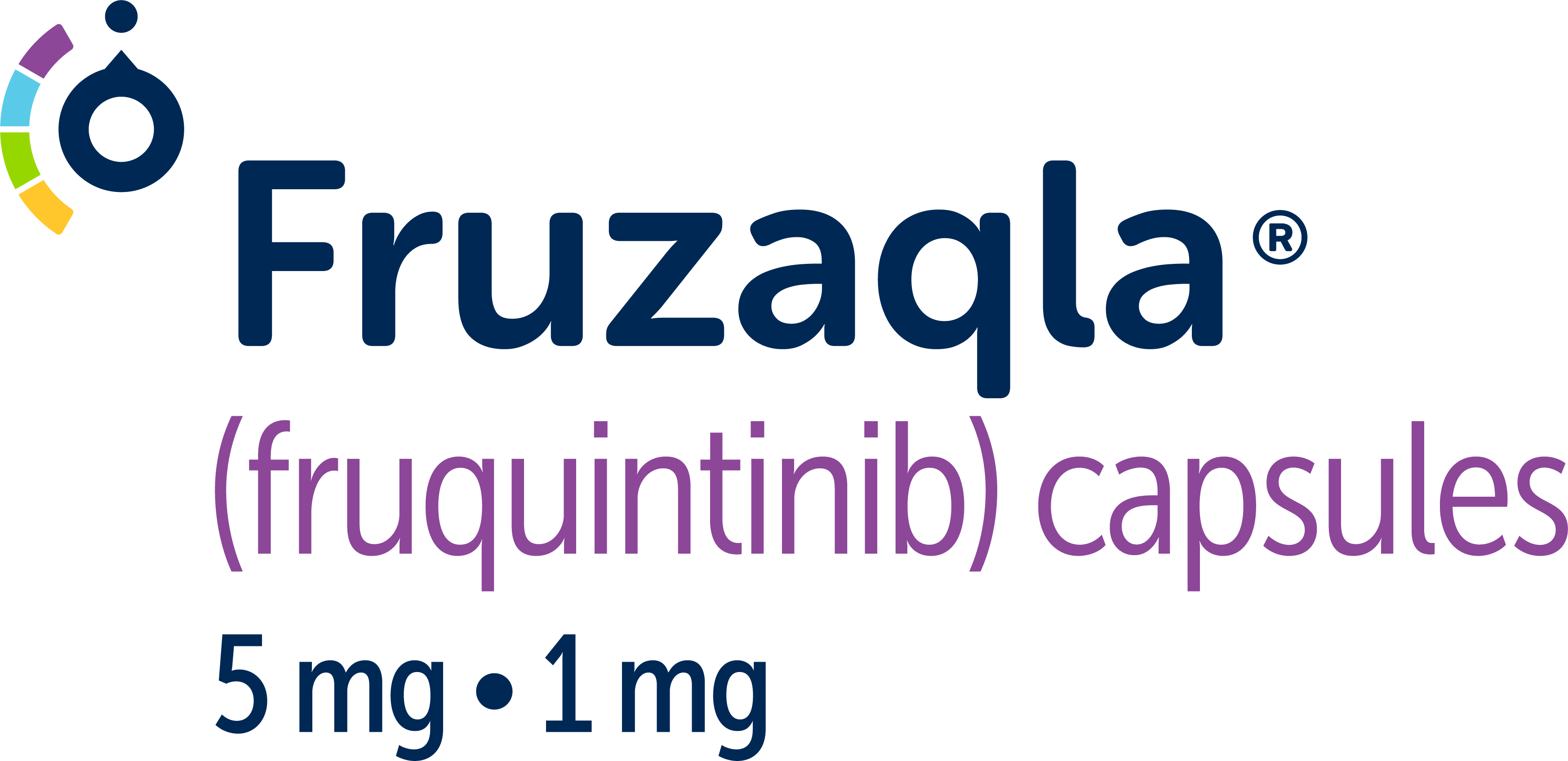
Reimagine Survival in mCRC with FRUZAQLA®
The first and only novel targeted therapy approved for mCRC in more than a decade, for adult patients who have received oxaliplatin- and irinotecan-based regimens, regardless of mutation status1-5
FRUZAQLA (fruquintinib) is indicated for the treatment of adult patients with mCRC who have been previously treated with fluoropyrimidine-, oxaliplatin-, and irinotecan-based chemotherapy, an anti-VEGF therapy, and, if RAS wild-type and medically appropriate, an anti-EGFR therapy.1
In FRESCO-2, FRUZAQLA (fruquintinib) + BSC significantly improved overall survival vs placebo + BSC (7.4 vs 4.8 months, a 2.6-month difference); HR=0.66 (95% CI: 0.55-0.80); P<0.001.1
Please choose the option that best describes you:
FRESCO-2 Efficacy Results
Learn about the efficacy results from FRESCO-2, a global, double-blind, placebo-controlled study with a heterogenous patient population.
FRESCO-2 Safety Profile
Explore the safety profile of FRUZAQLA from the FRESCO-2 clinical trial.
Quality of Life Results
Learn more about how Quality of Life was measured in FRESCO-2.
a Individual plans may vary.
*Category 2A is based upon lower-level evidence, meaning there is uniform NCCN consensus (≥85% support of the Panel) that the intervention is appropriate.6,7
BSC=best supportive care; EGFR=epidermal growth factor receptor; mCRC=metastatic colorectal cancer; RAS=rat sarcoma; VEGF=vascular endothelial growth factor.
